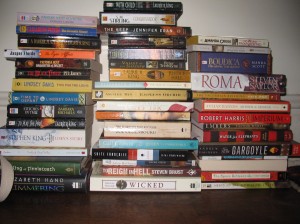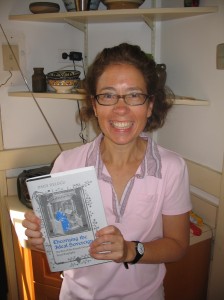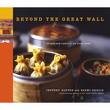Can I create a meme? Let’s see. As you can see from my last post but one, there has been talk all over the internet about buying books as presents this Christmas. But what books to buy? I thought it would be fun to list ten books I read this year and describe why I liked them to give other people inspiration about things they may not have read. The only thing is, I realized that I have already written about many of the new books I loved this year. I picked ten books I hadn’t written too much about, just to make it interesting, but some of my favourites have already been reviewed. So check out the archives too for ideas.
And I tag — EVERYONE! List ten of your favourite new books in your blog or in the comments (or however many you can come up with). They don’t have to be new this year, just new to you this year. Here are mine:
Anthony Powell, Dance to the Music of Time. This is a link to the first of four volumes in this monumental series. I can’t beieve I had never read this before. Perfect for people who like novels about decayed upper classes in England between the wars.
Sarah Dunant, The Birth of Venus I liked this almost as much as In the Company of the Courtesan. About painters in Renaissance Florence in the time of Savonarola, if you like juicy but realistic historical fiction, this is for you.
Rebecca Stott, Ghostwalk. Nicely spooky, this blends animal rights activism with Isaac Newton and makes perfect sense.
Charles de Lint, Memory and Dream. Have I ever put up a list of books that didn’t have a de Lint book on it? This is another novel about an artist that threads together past and present perfectly.
Guy Gavriel Kay, Ysabel. Photography, magic, myth, Gauls and Romans, this is perfect or fantasy-loving adolescent. Or a fantasy-loving adult.
Gail Godwin, Father Melancholy’s Daughter. I love all her books, but I am especially partial to novels about angsty Anglicans and this is a perfect example of that genre.
Mohja Kahf, The Girl in the Tangerine Scarf. A novel about growing up Muslim in Indiana, beautifully written and rich with the textures and varieties of religious life.
Barbara Kingsolver, The Bean Trees. One of the good things about this book for the would-be writer is that it is wonderful, like all of hers, but it was her first published novel and you can see how she improved in her later work. It is encouraging.
Shirley Hazzard, The Great Fire. This is romance novel set in Japan, Hong Kong, and New Zealand in the aftermath of World War II. No, not a love story, a real romance novel. See for yourself. Who says literary fiction and romance are incompatible? Not me.
Steven Brust, Brokedown Palace. A fairy tale with all the requisite elements set in a magical, strange not-quite-but-almost-Hungary.
Okay, that’s ten. Now it’s your turn. Spread, little meme, and prosper, and may the authors you introduce prosper likewise!












